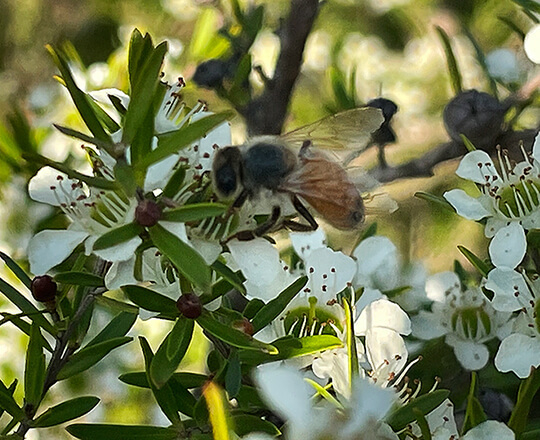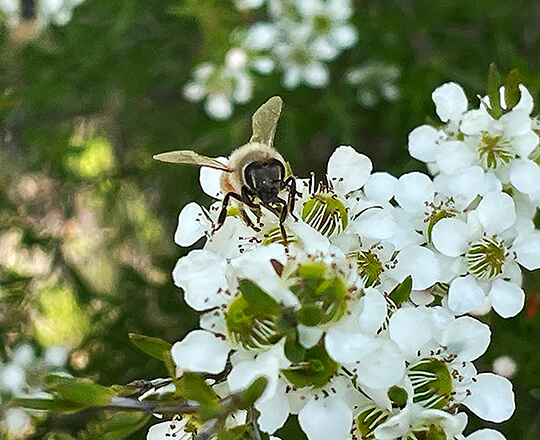Goodwood Produce gets MGO honey tested annually by the University of Sunshine Coast (USC).
Each batch is tested separately. Goodwood Produce can supply the test results on request showing MGO, DHA in ppm and an index of heat damage of the MGO Honey.
For an in-depth look into MGO and UMF, read our article "MGO vs UMF - what does it all mean?"
Understanding the honey
MGO stands for Methylglyoxal and honeys rich in this are extremely useful medically.
Honey is approximately 85% sugar. In this cocktail of chemical compounds that is sugar, one known as Glycerone or DHA (Dihydroxyacetone) is produced when bees gather nectar from plants rich in this substance. Leptospermum species are generally rich in DHA, however, there is considerable variation between the different species. Australia has over 80 species of Leptospermum, and New Zealand has only one, Manuka.

"The evidence is hard to deny! Nothing beats the power of Mother Nature. A little bit gross, but after night 1 (Wednesday) my son said he washed all the “green stuff” off in the shower and it has hurt a lot less since! No need for antibiotics, bee power for the win!" Cally Nielsen - Facebook

Converting DHA to MGO
We now know that approximately 40% of DHA disappears over the first 12 to 18 months and approximately 40% of that goes to MGO. Therefore we multiply DHA by 0.85 x 0.4 x 0.4 to give a VERY ROUGH indicator of expected MGO (expressed as ppm or mg/kg) in honey, based on nectar DHA values. This can be summarised by DHA x 0.136.

Testing Leptospermum for DHA
Nectar sampling from wild communities of Leptospermum scoparium (Manuka) throughout Victoria and Tasmania routinely test at average levels of DHA 2,000 ppm thus indicating potential MGO levels of >260 mg/kg. This is roughly the same result as found in New Zealand.
These levels of bioactivity are considered by the University of Technology, Sydney (UTS) to be useful for medical purposes. (In NZ terms, a Unique Manuka Factor or UMF of 10+).
More detailed 2016 - 2018 testing of Leptospermum polygalifolium from wild populations in SE Queensland has further confirmed DHA levels of 10,000 to 12,000 ppm which could potentially produce highly concentrated MGO honeys that are significantly in excess of normal Manuka results.
See a table of our Australian Leptospermum species. Some (not listed) don’t activate honey and some (not listed) are yet to be measured.

